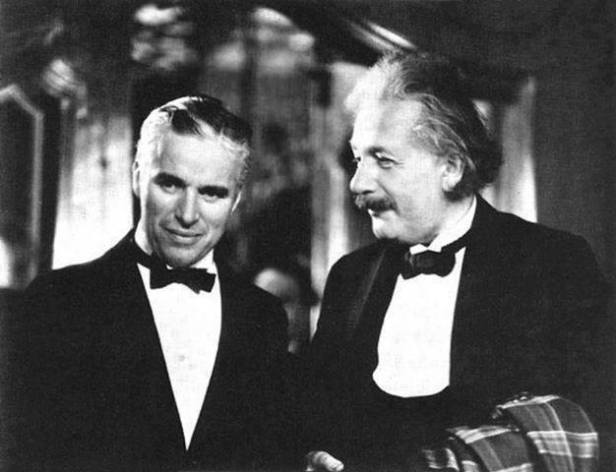When at school, we learned about the solar system in which the sun stood still in the center and the earth and planets moved around it, we call it as heliocentric model. You problaby already know that in the past, there was proposed a model that is opposed to the heliocentric model, the model called geocentric model.

Historically, the geocentric model was introduced around AD 150 by Ptolemy (ca. 85—ca. 165) to describe the motion of the celestial bodies. This model had been held by most educated Greeks at least since the time of Aristotle, who believed for mystical reasons that the earth should be at the center of the universe. Later European learning was based on the Greek sources that had been passed down, so that the ideas of Aristotle and Ptolemy became the basis for much of Western thought.

Nicolaus Copernicus (19 February 1473 – 24 May 1543) was a Renaissance astronomer and the first person to formulate a comprehensive heliocentric cosmology which displaced the Earth from the center of the universe
Otherwise, the heliocentric model was introduced by Aristarchus (310 BC – ca. 230 BC) that was rejected in favor of the geocentric theories of Aristotle and Ptolemy. Even so, the model was revived nearly 1800 years later by Copernicus, after which Johannes Kepler and Isaac Newton gave the theoretical explanation based on laws of physics, namely Kepler’s laws for the motion of planets and Newton’s laws on gravitational attraction and dynamics.
Ptolemy’s model of the cosmos was adopted by the Catholic Church and held as official doctrine for fourteen hundred years. It was not until 1543 that an alternative model was put forward by Copernicus in his book De revolutionibus orbium coelestium (On the Revolutions of the Celestial Spheres), published only in the year of his death (though he had worked on his theory for several decades).
The Copernican model was held to contradict the Bible, which was interpreted as saying that the planets moved around the earth, even though the Bible never clearly stated that. In fact, at the time the Bible was written people believed the earth was flat. The Copernican model led to a furious debate as to whether the earth was at rest, culminating in Galileo’s trial for heresy in 1633 for advocating the Copernican model, and for thinking “that one may hold and defend as probable an opinion after it has been declared and defined contrary to the Holy Scripture.” He was found guilty, confined to house arrest for the rest of his life, and forced to recant. He is said to have muttered under his breath “Eppur si muove,” “But still it moves.” In 1992 the Roman Catholic Church finally acknowledged that it had been wrong to condemn Galileo.

Ptolemy and Copernicus, ca. 1686, at King Jan Sobieski’s library, Wilanów Palace: an early Copernicus depiction
Well, we have known the history already, but have you ever thought that the different pictures come as a result of different views of reality? (maybe you should read my previous posting entitled “What is Reality?”) It has become a philosophical debate for a long time to answer the question: which model is real? The geocentric model seemed natural because we are in earth, we don’t feel the earth under our feet is moving, and instead we see the sun that moves, rises in the east and sets in the west. But after all, we have already known that the heliocentric model is right and become the basic of modern physics.
According to Albert Einstein’s Theory of Relativity (you can see it here), we can use either Ptolemy model or Copernican model as a model of the universe, for our observations of the heavens can be explained by assuming either the earth or the sun to be at rest. It based on this principle: if we have two objects and nothing else, we are not possible to tell which object is moving and which object is standing still. I mean like this, we will obviously see the sun is moving and the earth is standing still because we do the observation from the earth. If we observe from the outside of our solar system, we will see the sun is standing still and the earth and the planets move around it. If we observe from the outside of our Milky Way galaxy, we will see both the earth and the sun move around its center.
The two models are true, we can’t say which model is wrong and which model is correct. But now, we are more likely to use the heliocentric model (Copernican system) simply because its advantage, that is the equations of motion will be much simpler in the frame of reference in which the sun is at rest.
 During that same visit to California, Einstein was asked to appear alongside the comic actor Charlie Chaplin during the Hollywood debut of the film City Lights. When they were mobbed by thousands, Chaplin remarked, “The people applaud me because everybody understands me, and they applaud you because no one understands you.” Einstein asked Chaplin, “What does it all mean?” Chaplin replied, “Nothing.”
During that same visit to California, Einstein was asked to appear alongside the comic actor Charlie Chaplin during the Hollywood debut of the film City Lights. When they were mobbed by thousands, Chaplin remarked, “The people applaud me because everybody understands me, and they applaud you because no one understands you.” Einstein asked Chaplin, “What does it all mean?” Chaplin replied, “Nothing.”







